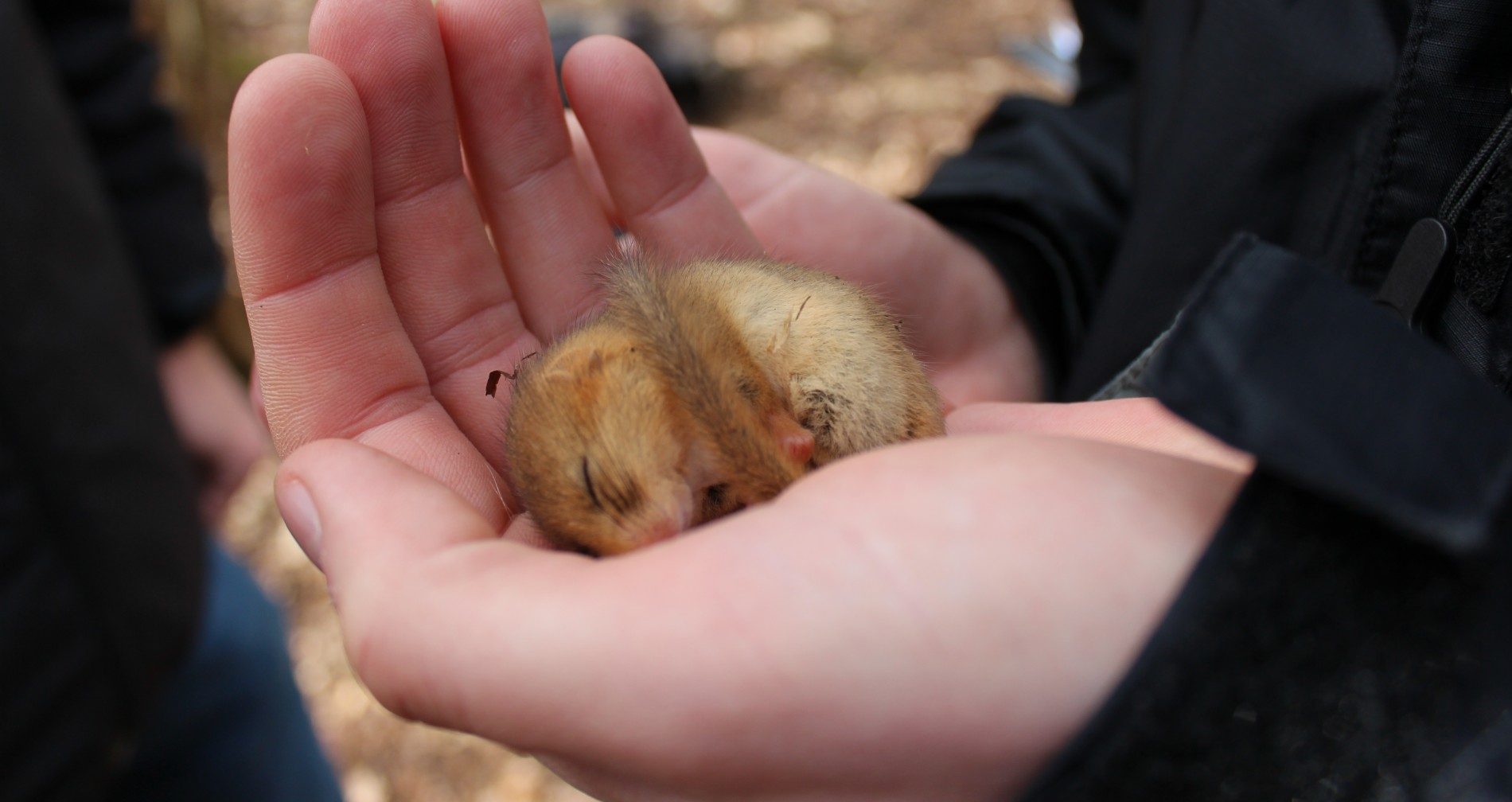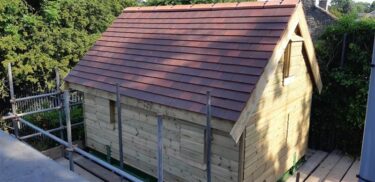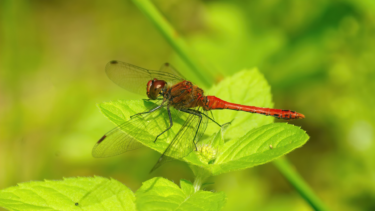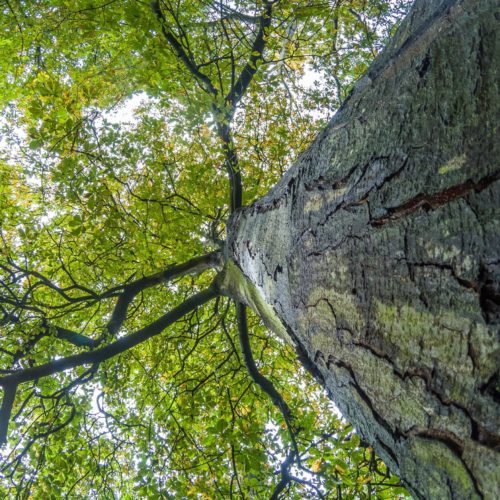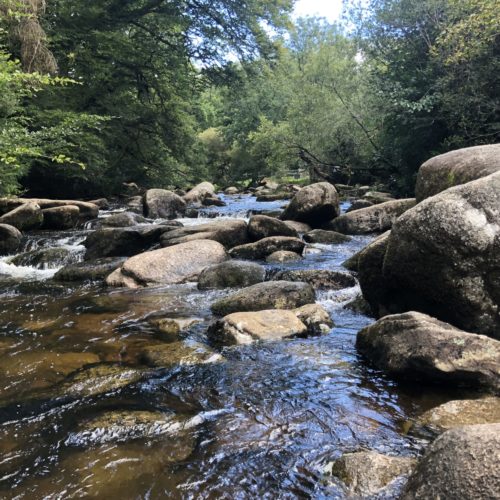Where potential hazel dormouse habitat, such as woodland, hedgerow and scrub, is present on a site, particularly within the known range of dormice, surveys should be undertaken to determine their presence or likely absence.
Two survey techniques can be used. Where only a small area of habitat may potentially be lost, a search for dormouse-nibbled nuts can be carried out between September and December. Dormouse open nuts in a distinctive way, leaving characteristic tooth marks around the outside edge of a neat round hole, which will have a smooth inner rim.
Where proposals may involve more significant levels of habitat loss or disturbance, or if a gnawed-nut survey proves inconclusive, dormouse nest tubes can be erected in suitable vegetation throughout the survey area. These are small plastic tubes with wooden trays which dormouse readily build summer nests in. A minimum of 50 should be deployed between April and November and checked monthly to achieve an adequate ‘thoroughness’ score which is dependent on how many tubes are used, and over how many months they are deployed. A survey licence is required to undertake this type of survey if dormouse presence is confirmed.
Our surveys and mitigation strategies are guided by best practice including the Dormouse Conservation Handbook (Bright et al, 2006) and Natural England Standing Advice, and our surveyors meet the competencies set out by the Chartered Institute of Ecology and Environmental Management (CIEEM). Where dormouse populations may be affected by a development, we can provide advice on suitable mitigation options and guidance on minimising ecological risk. To allow works to proceed lawfully, we can apply for the development licences necessary on your behalf.
